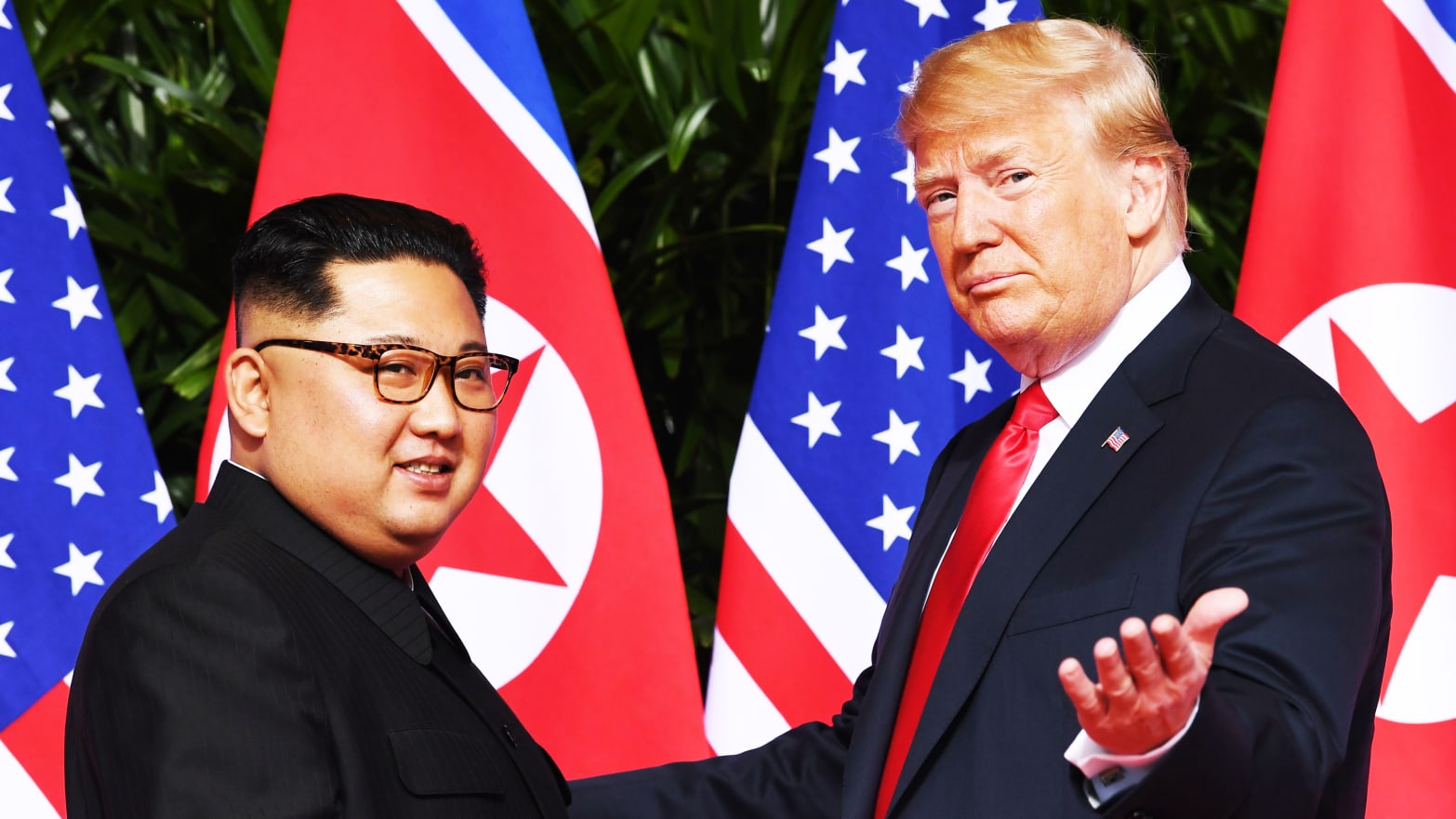Only months after threatening each other with the devastation of nuclear war, President Donald Trump met with Kim Jong Un, the dictator of North Korea, in Singapore on Tuesday in a groundbreaking meeting on Sentosa Island.
The meeting—the first between an American president and a leader of the most reclusive and, arguably, the most repressive regime on the planet—began with several handshakes between Trump and Kim, before a short photo session with news photographers from around the world. The leaders appeared in front of a backdrop that included six American flags and six North Korean flags side-by-side.
Trump told reporters that the meeting was “my honor,” and vowed that he and Kim “will have a terrific relationship, I have no doubt.”
Kim, in Korean, told the press before another handshake that “the way to come to here was not easy” but that “we’re here, overcoming everything.”
“That’s true,” Trump added.
After a short initial one-on-one meeting between the two leaders—roughly 40 minutes—Trump and Kim appeared on a balcony together, once again shaking hands. Trump described the initial meeting as “very very good, excellent relationship,” before heading for a “working lunch” joined by White House Chief of Staff John Kelly, Secretary of State Mike Pompeo, and their North Korean counterparts, which began with yet another handshake.
“It wasn’t easy for us to come here,” Kim said through an interpreter. “There was a past that grabbed our ankles and wrong prejudices and practices that at times covered our eyes and ears. We overcame all that and we are here now.”
In January, following tests of a long-range missile that the North Korean regime said could strike anywhere in the United States, Trump made it clear that his administration would leave all military options to deter North Korean nuclear aggression.
The president also taunted Kim as “Little Rocket Man” on Twitter, and threatened that the Korean peninsula would face “fire and fury like the world has never seen” if Kim’s pursuit of intercontinental nuclear missile technology continued.
In Singapore, however, Trump was all smiles, shaking Kim's hand multiple times and flashing a thumbs-up to the dictator. The exchange was even more pleasant in contrast to Trump’s frosty relationships with the leaders of major Western democracies and allies. Upon first meeting Chancellor Angela Merkel of Germany in March 2017, for example, Trump refused to shake her hand.
The American government’s stated goal in engaging the North Korean dictator—who was found, in a report compiled by the International Bar Association War Crimes Committee, to be culpable for numerous crimes against humanity—is the complete denuclearization of North Korea, a goal that most regional analysts consider extremely unlikely.
“North Korea has previously confirmed to us its willingness to denuclearize,”said Pompeo ahead of the summit. “President Trump believes the United States has the opportunity to change the trajectory of our relationship.”
But Trump himself has pulled back from the hopes of any major concessions from North Korea during the Singapore summit, calling the summit more of a “getting to know you meeting plus” than a major negotiation between nuclear powers.
“You’re talking about years of hostility, years of problems, years of, really, hatred between so many different nations,” Trump said at the time. “But I think you’re going to have a very positive result in the end. Not from one meeting.”

